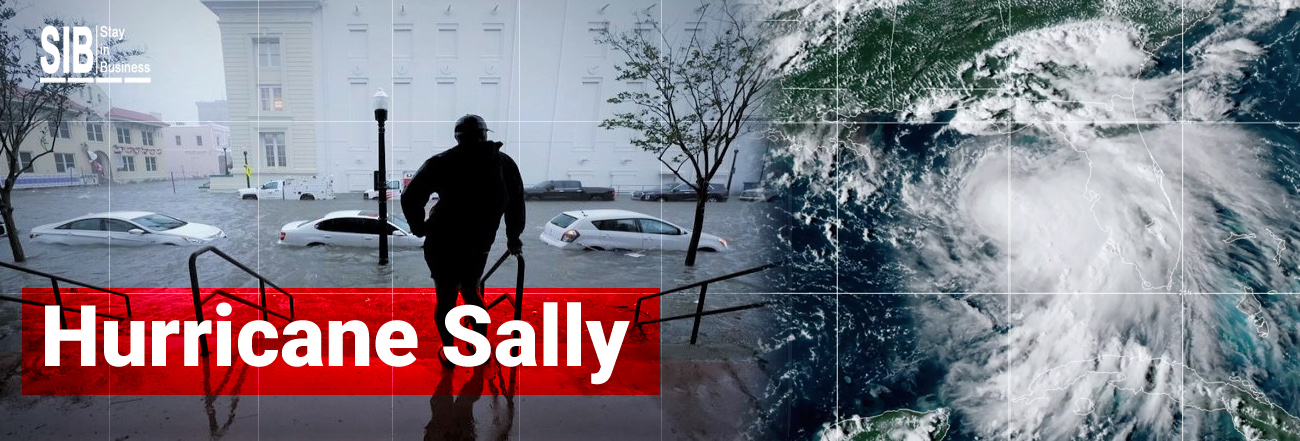Hurricane Sally Plunges More than Half a Million Americans into Blackout

Hundreds of thousands of residents along the US Gulf Coast were plunged into darkness as Hurricane Sally lashed across the shores of Alabama early in the morning on the 16th of September as a Category 2 tropical storm at more than a 100 mph speed, claiming the life of one individual while emergency teams had to rush to the aid of hundreds in water logged regions.
In the city of Pensacola, Florida, official authorities closed the recently constructed Three Mile Bridge after a barge collided into the structure and damaged sizable portions of it. Within a short spell of a few hours unprecedented rainfall was unleashed upon the coastal city. Widespread water logging ripped through large sections of the Florida Panhandle and the southern regions of Alabama.
In Orange Beach, Alabama, the mayor noted without getting into specifics that one death had been registered while the whereabouts of another individual were still unknown.
Weather experts noted that Category 2 hurricanes can be tenaciously forceful and possess tremendous potential to uproot trees and bring down pylons and other constructions that lack a sturdy foundation.
Although Hurricane Sally’s wind speeds quickly dropped to below 50 mph, there was still a lot of impact owing to excessive precipitation and uncontrollable air currents.
The storm also disrupted electricity across half a million households in Alabama and Florida as it slowly climbed northwards after crossing over to land.
Hurricane Sally – Damage Assessment
Scores of localities registered nearly 20 inches of downpour. Central Pensacola saw as much as 5 feet of water logging in what has been one of the city’s most disastrous environmental hazards. The police urged local residents to stay indoors so that they could respond to the situation with minimal constraints.
Air currents were milder compared to those of Hurricane Laura that occurred barely a month ago, but were still strong enough to propel a hefty barge into the Three Mile Bridge and capsize trucks, vans, lorries and trailers.
The Escambia Bay Bridge in Escambia County also had a close call when a large sized, fast approaching barge seemed all set for a head-on collision before drifting away onto land. The country’s sheriff noted that the damage hurled by Hurricane Sally had taken them all by surprise.
Numerous places in Alabama witnessed an abnormal level of downpour that was jeopardizing the lives of many in the area, especially along the Florida-Alabama frontier. The damage was becoming difficult to manage and local authorities had to roll out ‘stay home’ alerts to local residents.
The Impact of Climate Change on Hurricane Sally’s Wind Speeds
Weather experts observed that Hurricane Sally’s ascent was drastically slow compared to other storms in the same category, which could be the result of climate change. A study conducted two years ago revealed that hurricane speeds had fallen by 10% over the last fifty years which in turn has led to a rise in rainfall.
This has also been the case with Hurricane Sally and is expected characterize other storms such as Paulette, Rene, Teddy and Vicky that are yet to arrive from the Atlantic Ocean.
Categories: Natural Disasters
